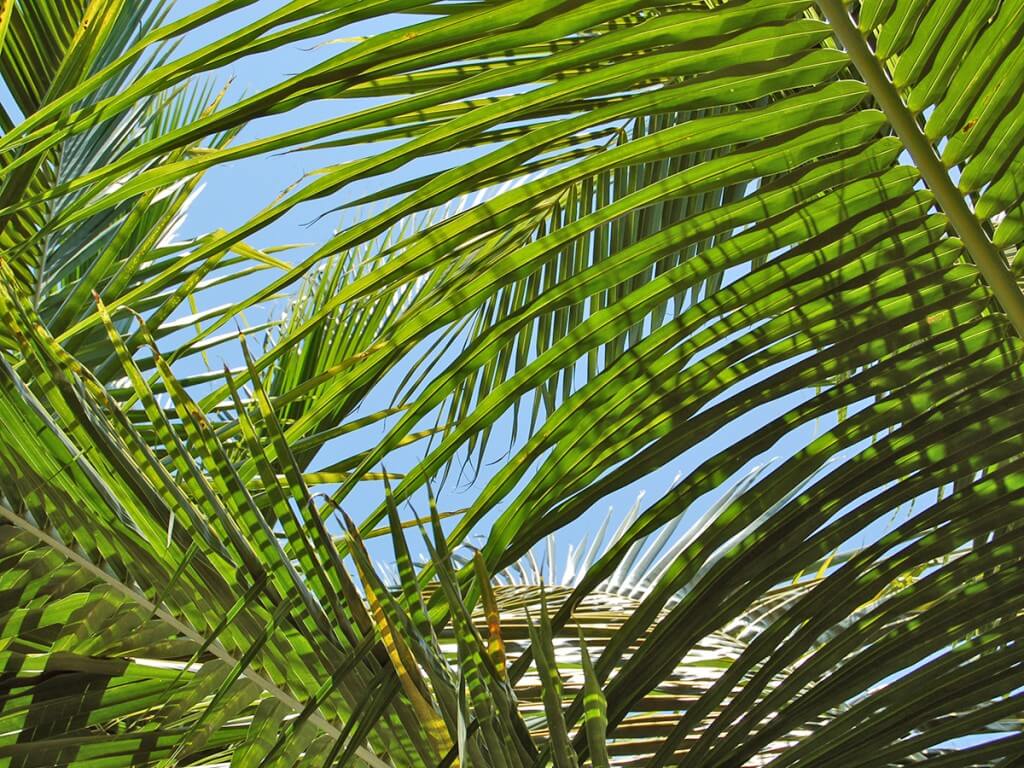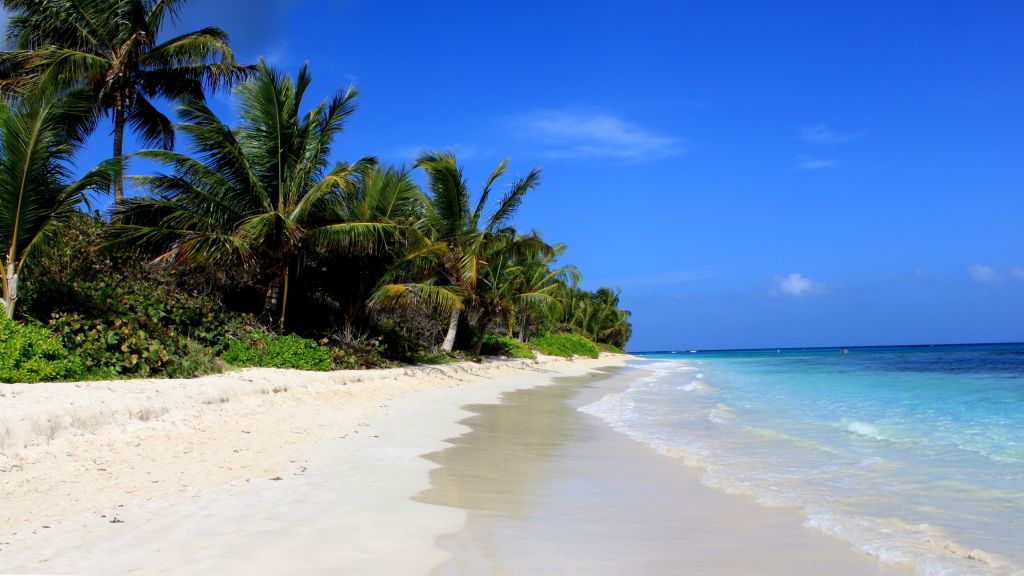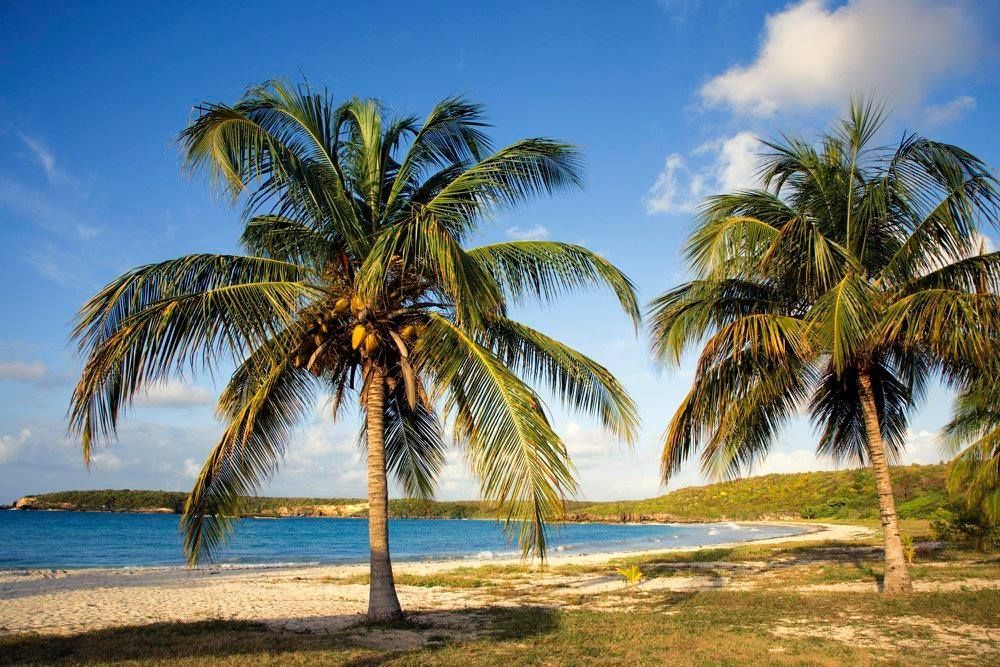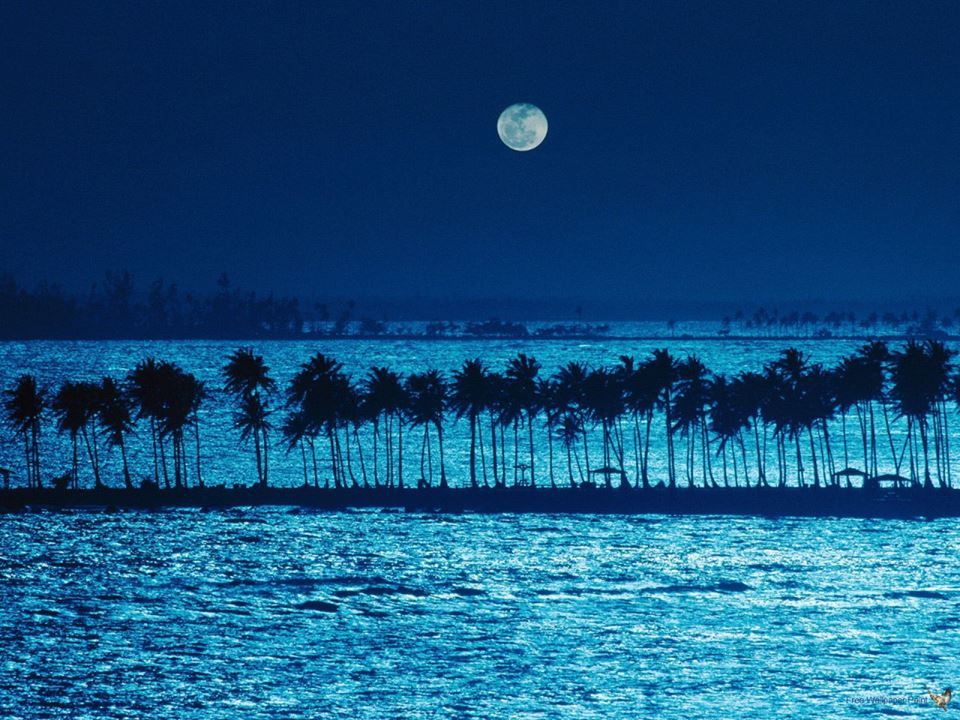Puerto rico palm trees: El Yunque National Forest – Nature & Science
El Yunque National Forest – Nature & Science
Photo © 1997-2008 Fairchild Tropical Botanical Gardens
Puerto Rico Royal Palm, Mountain Cabbage (Eng.), Palma Real Puertorriqueña, Palma de Yagua (Sp.),
Roystonea borinquena (Sci.), native plant species, Puerto Rico and Vieques, naturalized, St. Croix, St. John, US Virgin Islands and Tortola, British Virgin Islands.
Information compiled by Alan Mowbray, USDA Forest Service,
El Yunque National Forest – 2009.
General Information:
Class- Commelids, Order-Arecales, Family- Arecaceae, Genus- Roystonea, Species– R. borinquena.
Description:
Roystonea borinquena is a rapidly growing tree that reaches an average height of 40 to 85 feet (12 to 18 meters). Young trees can average a 3 foot (1-meter) growth annually. Trunk diameter ranges from 9. 8 to 27.5 inches (25 to 70 centimeters). Typical age span ranges from 80 to 110 years. The tree has a smooth, gray trunk with a swollen base and gracefully drooping fronds. The upper trunk is encased in a green column of leaf sheaths 3.2 to 9.8 feet (1 to 3 meters) long. The leaves, arranged on both sides have short leafstalks with a sheath and blade 7.8 to 12 feet (2.4 to 3.7 meters) long. The youngest leaflet projects as a pointed spire
8 to 27.5 inches (25 to 70 centimeters). Typical age span ranges from 80 to 110 years. The tree has a smooth, gray trunk with a swollen base and gracefully drooping fronds. The upper trunk is encased in a green column of leaf sheaths 3.2 to 9.8 feet (1 to 3 meters) long. The leaves, arranged on both sides have short leafstalks with a sheath and blade 7.8 to 12 feet (2.4 to 3.7 meters) long. The youngest leaflet projects as a pointed spire
above the others.
Flowering begins as early as the seventh year, and trees bloom throughout the year. Flower clusters reach up to 3 feet (1 meter) in length. The whitish male and female flowers form on the same branched cluster, with male flowers of each tree opening and falling before the female flowers to prevent self-fertilization. Generally, each female flower forms between two male flowers on the branch cluster. The stalk-less male flowers measure 0.5 inch (13 millimeters) across, while the smaller female flowers measure 0.1 inch (3. 2 millimeters) across. The greenish-yellow fruits are 0.5 inch (13 millimeters) long and about 0.4 inch (10 millimeters) in diameter. Fruits ripen to a brownish-purple color and contain one hard and oily light brown elliptic seed that is 0.3 inch (8 millimeter) long. The flowers are an important nectar source for honey bees, and, like those of the Sierra Palm (Prestoea Montana) the fruits are a fat-rich food for birds and are a vital resource for the highly endangered Puerto Rican Parrot (Amazona vittata). Seeds are commonly dispersed by birds and rodents.
2 millimeters) across. The greenish-yellow fruits are 0.5 inch (13 millimeters) long and about 0.4 inch (10 millimeters) in diameter. Fruits ripen to a brownish-purple color and contain one hard and oily light brown elliptic seed that is 0.3 inch (8 millimeter) long. The flowers are an important nectar source for honey bees, and, like those of the Sierra Palm (Prestoea Montana) the fruits are a fat-rich food for birds and are a vital resource for the highly endangered Puerto Rican Parrot (Amazona vittata). Seeds are commonly dispersed by birds and rodents.
Lumber from this species was once widely used in rural construction – the leaves were used as a roof thatch and dry leaf sheaths (yaguas) were spread out flat to fashion sides for rustic buildings.
Distribution:
Roystonea borinquena grows naturally on the slopes and valleys of limestone hills to an elevation of 2,500 feet (762 meters), in areas that receive an annual precipitation level of 49 to 98 inches (125 to 250 centimeters) with a mean annual temperature of 77° Fahrenheit (25° Celsius). Because of its ability to withstand high, hurricane-force winds, the species sometimes dominates the forest canopy despite its relatively short stature.
Because of its ability to withstand high, hurricane-force winds, the species sometimes dominates the forest canopy despite its relatively short stature.
Threats:
The Puerto Rico Royal Palm is a non-threatened and non-conservation dependent species.
Alerts & Warnings
- Partial closure for emergency work on PR-186
- Cierre parcial por trabajos de emergencia en la PR-186
- Bisley Road/Trail closed for construction works
- Carretera/Vereda Bisley cerradas por trabajos de construcción
- Rd 9938 Repairs – Closed to Vehicles / Pedestrian Access to Mt. Britton Trail
- Reparaciones en Rd 9938 – Cerrado a vehículos / Acceso peatonal a Mt Britton
- Main Recreation Area Open by Reservation
- Principal Área Recreativa Abierta Por Reservación
- COVID-19
View All Forest Alerts
Palm Trees Adapted to Withstand Hurricanes, Forest Ecologist Says
Palm Trees Adapted to Withstand Hurricanes, Forest Ecologist Says
Jump to
- Main content
- Search
- Account
Search iconA magnifying glass. It indicates, “Click to perform a search”.
It indicates, “Click to perform a search”.
Insider logoThe word “Insider”.
US Markets Loading…
H
M
S
In the news
Chevron iconIt indicates an expandable section or menu, or sometimes previous / next navigation options.
HOMEPAGE
Science
Save Article IconA bookmarkShare iconAn curved arrow pointing right.
Download the app
Palm trees blow in the wind from Hurricane Ian in Sarasota, Florida, on September 28, 2022.
Joe Raedle/Getty Images
- Bendy, woodless trunks and above-ground roots prevent palm trees from toppling during severe storms.
- Puerto Rico’s palms recovered faster than other tree populations after Hurricane Maria in 2017, researchers found.
- Palm trees are members of Arecaceae family, a group that emerged about 100 million years ago.
LoadingSomething is loading.
Thanks for signing up!
Access your favorite topics in a personalized feed while you’re on the go.
Last week, footage from Hurricane Ian slamming into Florida and South Carolina showed damaging winds and flying waves snapping and buckling trees. But as pines and oaks fell, most palm trees were able to bend with the wind and withstand Ian’s punishing conditions.
But as pines and oaks fell, most palm trees were able to bend with the wind and withstand Ian’s punishing conditions.
That’s because palm trees have distinctive features that make them resistant to storm damage, Maria Uriarte, a forest ecologist at Columbia University, told Insider.
Human-caused greenhouse gas emissions trap heat in ocean waters, which in turn causes more evaporation and pumps moisture into the air. As hurricanes pass over, they absorb that moisture, which fuels slower and wetter storms, like Hurricane Ian.
But even as storms strengthen, palm trees’ bendy trunks and unique root systems continue to allow them to stand up to these tropical tyrants.
Winds lash the coastal city of Fajardo as Hurricane Maria approaches Puerto Rico, on September 19, 2017.
RICARDO ARDUENGO/AFP via Getty Image
Palms belong to the Arecaceae family, a group that emerged about 100 million years ago. There are 181 known genera and around 2,600 species.
There are 181 known genera and around 2,600 species.
While palms are technically trees, they’re monocots, meaning they’re more closely related to grass, corn, and rice than they are to other trees, according to Uriarte.
Monocots only have one cotyledon, or the part of the seed that grows into the leaves. Palm trees have a stem, with triangle-shaped leaves called fronds that grow from a point at the top, according to Uriarte.
“What happens during hurricanes is that they are very flexible, so they can move with the wind and the fronds tend to fall off, but they can grow very rapidly right after the storm passes,” she said, adding, “That makes them very resistant to damage.”
Debris in the Baie Nettle area of Marigot on Saint Martin, after being devastated by Hurricane Irma, on September 12, 2017.
MARTIN BUREAU/AFP via Getty Images
Palm trees bend easily in the wind, thanks to their fibrous and fairly wet woodless trunks. “If you were to cut them, it’s like a bundle of vessels that they use to move water and nutrients, and it’s pretty soft,” Uriarte said, adding, “That makes them very flexible.”
“If you were to cut them, it’s like a bundle of vessels that they use to move water and nutrients, and it’s pretty soft,” Uriarte said, adding, “That makes them very flexible.”
This flexibility makes them well adapted to windy and hurricane-prone areas.
Not all palm trees are alike. Uriarte pointed to research in Miami after Hurricane Andrew that found that palm trees originating from hurricane-prone areas — mostly in the Caribbean — were much more resistant to hurricanes than palms that came from areas that did not have hurricanes.
“That’s interesting, because that also suggests that this resistance to hurricanes has evolved over time and that is not the same for all palm trees,” Uriarte said.
In hurricane-prone areas, palm trees are common at higher elevations. “I expect that part of that reason is that, as you go up the mountain, it gets wetter and palms like wet soil,” Uriarte said.
Another explanation, she added, might be that high mountains get the brunt of the wind from hurricanes, and palms tend to be more resistant to wind than other types of trees.
The roots of Prestoea montana, a palm tree on the wet slopes of the high mountains in El Yunque rainforest, in 2012.
Xemenendura
Palm trees are hard to uproot. That’s because they have unique root systems, which are made up of a large number of short roots, which spread across the upper levels of the soil and help anchor the trees in place.
In the photo above, a palm tree in Puerto Rico’s El Yunque rainforest grows roots above the ground.
“They go into the ground, but part of the root is also above the soil and that means that they don’t get bogged down by the flooded areas,” Uriarte said.
In 2017, Hurricane Maria slammed into Puerto Rico as a Category 4 hurricane with winds up to 155 miles per hour.
Uriarte has monitored tree growth and death across Puerto Rico for more than a decade. After Maria, she and her team went back to Puerto Rico to document the storm’s damage. They found that the hurricane had killed or severely damaged an estimated 20 million to 40 million trees. The palm trees were able to bounce back more quickly than other trees populations after the storm, in part because palms take root quickly.
“All of the trees took a while to recover, but the fastest recovery was for the palms,” Uriarte said, adding, “They’re unique and very well adapted to withstand hurricanes.”
Sign up for notifications from Insider! Stay up to date with what you want to know.
Subscribe to push notifications
Read next
Environment
Hurricanes
Climate Change
More. ..
..
Puerto Rico. American Palms at the Ancient Citadel
All ancient buildings in Puerto Rico date back to at least the 16th century. As the Spaniards came here, they immediately began to build up the island. It was not so important where to live, how to protect a place to live, so the oldest structures are all completely protective. The entire fort is called Castillo San Felipe del Morro, in honor of King Philip II of Spain.
The fort was designed to protect not only the city, but the entire San Juan Bay from numerous overseas enemies. There were many enemies, because everyone who was heading to conquer the New World first stumbled upon Puerto Rico, he was the first on the way from Europe to America. nine0003
The construction of the citadel lasted 50 years, the next 400 years, changes were made in the spirit of modern defensive art. For example, initially the walls were 1.8 meters wide, and now they are 4.4. In order not to mention meters anymore, I will also say that the height of the defensive walls at the highest point is 55 meters! Towers-houses are visible along and at the corners of the walls; they served to monitor the enemy from the sea. The turrets are called garitos, they are very beautiful, they have even been made a cultural symbol of Puerto Rico. nine0003
For example, initially the walls were 1.8 meters wide, and now they are 4.4. In order not to mention meters anymore, I will also say that the height of the defensive walls at the highest point is 55 meters! Towers-houses are visible along and at the corners of the walls; they served to monitor the enemy from the sea. The turrets are called garitos, they are very beautiful, they have even been made a cultural symbol of Puerto Rico. nine0003
Such towers were built in Europe in the 12th century, they can be round or polygonal in shape.
Throughout its existence, the fortress has experienced many attacks. There were several of the most significant. In 1595, Sir Francis Drake’s fleet tried to attack her, but the attack failed after the Spanish defender hit the captain’s ship with a cannon. Three years later, the British again attacked the island, this time more successfully, because they took into account the mistakes of the past and did not climb from the sea. They landed on the other side of the land and calmly almost occupied the island. And only an epidemic of disinteria forced the British to sail back to their foggy Albion. nine0003
And only an epidemic of disinteria forced the British to sail back to their foggy Albion. nine0003
This monument was erected to commemorate the battle with other invaders – the Dutch. This happened in 1625, when the Dutch almost captured the island. The Spaniards left the capital, then recaptured it again, and the Dutch set fire to San Juan in farewell and burned it almost to the ground.
The most successful was the American invasion in 1898. They attacked the fortress three times, bombing out a very beautiful lighthouse, instead of it they built a modern and completely uninteresting one, and have remained in Puerto Rico to this day. nine0003
For a long time the territory of the fortress and many government buildings served as a military base for the Americans, they removed it only in 1961.
Palm trees have never grown here, they were planted by the Americans in 1992 in memory of the journey of Christopher Columbus to America.
And on the shore the palm tree itself grew, most likely.
The citadel is included in the list of UNESCO World Heritage Treasures, more than two million people visit it every year. But we, unfortunately, do not belong to them, we were not counted. Because we entered the fortress not from the side where tickets are bought, but just like that, we walked here for free. nine0003
You can repeat our dishonest but unintentional act if you go to the ocean coast through the San Juan Gate – the central of the five city gates through which all the Spanish and guest nobility passed. Soldiers and horses with carts passed through the other four.
I mentioned this open-air museum complex when I talked about the cats of Puerto Rico, now I will try to ignore the cats and focus on what we saw on the way to the citadel. nine0003
And we saw the sea and many ships in the distance. In another distance, not in this photo.
I noticed that the walls of the fortress below are smooth, filled with cement. These are forced and very expensive methods of protection. Numerous trees and shrubs are destroying the ancient walls, so you have to destroy them in this way.
These are forced and very expensive methods of protection. Numerous trees and shrubs are destroying the ancient walls, so you have to destroy them in this way.
In the days when the American base was here, golf was played on many lawns in the territory of the fortress. What do you think, Americans without golf? In general, the lawns are still green and fresh, they are watered regularly. nine0003
A convenient wide road ended after a kilometer, then we went up the stairs.
In some places we were surrounded by almost jungle.
However, there were benches on the lawns for weary travelers.
But we didn’t sit on them, once you sit down, you realize that you’re tired.
From time to time the path led us to the observation decks.
This stone house was built not so long ago, and I don’t know for what purpose. Maybe during the Second World War, the Americans used it for some reason, and the fortress itself served as a base for monitoring German submarines. nine0003
nine0003
I promised not to pay attention to cats, but I didn’t say anything about lizards. The iguana inhabited the green color, gray iguanas live on the rocks and stones. Mimicry?
Approaching the bridge, we saw a beautiful chapel ahead.
We got even closer, looked behind the stone fence and found a cemetery. It was very old, already at home I read that this colonial cemetery has existed since 1863 and bears the name of St. Mary Magdalene de Pazzi, a native of Florence, by the way. nine0003
I didn’t jump down, it was too high, I won’t climb back.
The walls of the fortress are double, one could enter its territory through a gate in the wall. I wonder if the enemies knew about this?
This is the main entrance for all normal tourists, somewhere inside there is a ticket office. Maybe there was something to see that we had not yet seen, but we already had no desire, we wanted to go to the beach.
Now let’s go past this clearing and look for a taxi. nine0003
nine0003
Bye, stay in touch.
This entry is also posted on my LiveJournal blog.
mapala
You may be interested
[Random trip through five villages] Agave against the sky and Garibaldi’s wife’s embankment
[Random trip through five villages] About the ladies of Maddalena, Mussolini’s skyscrapers and painted windows
five villages] British flag and Niccolò Paganini
More details
How to get from Palma de Mallorca Airport to Puerto Rico
From
Show hotels
Airplane to San Juan
Fly to Palma Mallorca (PMI) from Madrid Airport (MAD).
Travel time 11 hours 20 minutes Fares from €340
Carrier: Iberia.
🔎
🚖 Find a cheap taxi
Get off at Madrid (MAD). nine0003
Apanhar um táxi em San Juan (SJU).
Travel time 12 min. Fare from €30 Distance 13 km.
Carrier: Puerto Rico Taxi.
🚖 Find an inexpensive taxi
Get off at Carolina.
🛏 Find hotel deals and discounts up to 20% in Puerto Rico
Airplane to Mayaguez
Fly to Madrid (MAD) from San Juan Airport (SJU).
Travel time 24 hours 19 minutes Fare from €300
Carrier: United Airlines.
🔎
🚖 Find a cheap taxi
Get off at San Juan (SJU).
Apanhar um táxi em Mayaguez (MAZ).
Travel time 8 min. Fare from €13 Distance 8 km.
Carrier: Aguadilla Taxi.
🚖 Find an inexpensive taxi
Get off at Mayagüez.
🛏 Find hotel deals and discounts up to 20% in Puerto Rico
Airplane to Aguadilla
Fly to Madrid (MAD) from San Juan Airport (SJU).
On the way 18 hours 48 minutes. Fares from €310
Carrier: United Airlines.
🔎
🚖 Find a cheap taxi
Get off at San Juan (SJU).
Apanhar um táxi em Aguadilla (BQN).
Travel time 32 min. Fare from €45 Distance 36 km.
Carrier: Leave the driving to me. nine0138
🚖 Find a cheap taxi
Get off at Mayagüez.
🛏 Find hotel deals and discounts up to 20% in Puerto Rico
Airplane at Roosevelt Roads
Fly to Madrid (MAD) from San Juan Airport (SJU).
On the road 24 h 50 min. Fares from €320
Carrier: Iberia.
🔎
🚖 Find a cheap taxi
Get off at San Juan (SJU).
Apanhar um táxi em Roosevelt Roads (NRR).
Travel time 45 min. Fare from €100 Distance 49 km.
Carrier: Luquillo Taxi & Tours.
🚖 Find an inexpensive taxi
Get off at Carolina.
🛏 Find hotel deals and discounts up to 20% in Puerto Rico
Plane to San Juan Isla Grande
Fly to Madrid (MAD) from San Juan Airport (SJU).
Travel time 25 hours 35 minutes Fares from €320
Carrier: Iberia.
🔎
🚖 Find a cheap taxi
Get off at San Juan (SJU).
954 m walk from San Juan Isla Grande (SIG) to Calle Pelayo.
Travel time 14 min. Distance 954 m.
Get off at Calle Pelayo.
Take the ATI Tren Urbano bus at the Calle Pelayo stop.
Travel time 2 min. Distance 672 m.
Carrier: ATI Tren Urbano. nine0138
Buy ticket
Get off at Isleta.
🛏 Find hotel deals and discounts up to 20% in Puerto Rico
What is the cheapest way to get from Palma de Mallorca Airport to Puerto Rico?